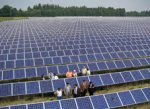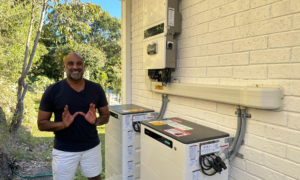In a tough economic climate, some UK farmers are creating additional streams of income by installing solar panels.
Thanks to a progressive feed-in tariff system, which pays generators of renewable energy like solar and wind power a premium rate for electricity they export to the national grid, landowners in a country more well-known for its dreary weather than its bountiful sunshine are expecting a new cash windfall from their solar farms. There have been reports of farmers swamped by calls from investors looking to profit from the latest cash cow.
The UK feed-in tariff system is similar to other such models established in Germany, Italy and Spain, which have also boosted local farming economies. It guarantees an 8-10% premium rate of return for the next 25 years, making this form of renewable energy project an attractive investment prospect for larger market funds looking for safe capital ventures.
Smaller farms can earn thousands of pounds per year from a small-scale solar power systems covering a barn or cattle-pen roof, but many are opting instead to reap potential millions by converting entire fields to large-scale solar collectors. A 15-hectare site generating five mega-watts of electricity could return £50,000 (AUD$86,400) annually.
Since the feed-in tariff was introduced, close to 4,000 farmers have installed solar panels around their properties. These projects have been predominately in the nation’s south-west, which experiences more average days of sunshine than other areas. However plans are underway to begin development of larger solar arrays in the colder north, despite those counties receiving 20% less average sunshine per year.
In Australia, businesses and green groups have long called for a similar national gross feed-in tariff system to help further stimulate the home-grown renewable energy economy and provide support for farmers and other producers seeking to diversify their income. At present, most states only offer a net feed-in tariff.
















































